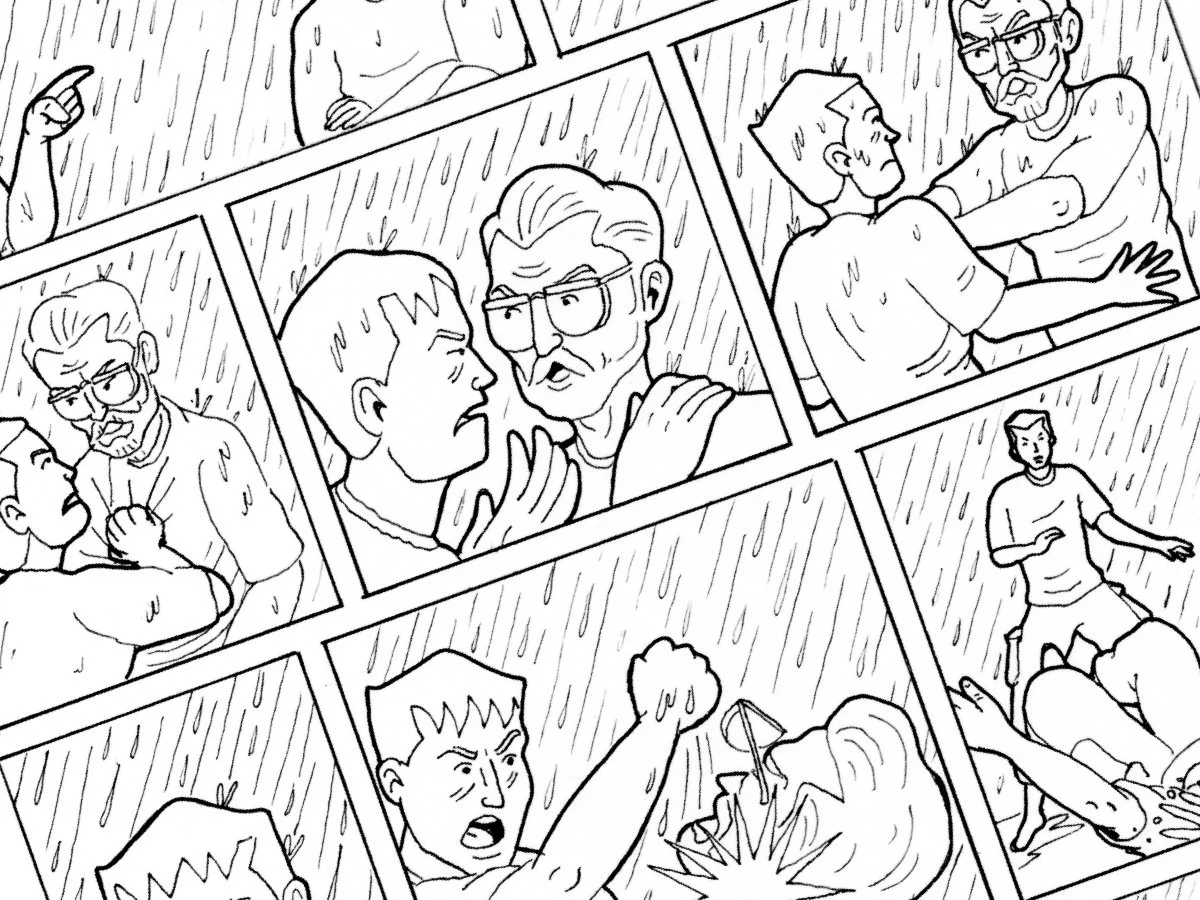
GRAPHIC NARRATIVE
Goa Victory or Death graphic narrative process with Chris Bonnell

BRIEF
Aleph Motion Pictures hired me to produce a Franco-Belgian style graphic novel based on a 90-page film script about the 1960s Portuguese-Indian Colonial War, with English, Portuguese, and French versions.

FROM SCRIPT TO PANEL
To better understand the scope, I began breaking down the script by assigning dialogue to specific panels, taking note of scene length, information reveals, and character development.

Making a Mockup
Next, I sketched out each page into a thumbnail and fit the panels together in sequence, then bound the pages into a mockup to get a sense of the novel’s pacing and page count— 150 pages.

Sketch
With the mockup as my map, I embarked on the lengthy task of penciling 150 paneled pages.

Pencil Composites
I chose a composite method, drawing various components separately on paper, then combining them digitally into a single page.

Scene Design
The story takes place inside an Indian fort-turned-prison, so the scenery and environment was a major character in the story, so it was important to create a strong sense of place that was easily replicable in long form visual storytelling.

Ink
The brief called for a Franco-Belgian “linclare” style. I researched Hergé, Moebius and others for reference, then decided to ink the work traditionally to stay true to the form. Composite pencil pages were printed large and traced with fine-line markers.

Color
Tone and shading would be achieved with color tints rather than cross-hatching, as seen in American comics. I stuck close to the regional colorways of the Franco-Belgian school, which drew from mid-century printing technology.

Translation
Since the work would be translated into three languages, I selected a font with requisite special characters. The translations were provided via spreadsheet. I referenced my script key to replace the dialogue for each version of the novel and re-sized the speech bubbles.

KEY TAKEAWAYS
Making a movie script into a graphic novel is not a “shot-to-panel” conversion process. Sequential art uses similar techniques to film, such as framing and narrative perspective, but the dimension of time separates these forms in important ways. I enjoyed the challenge of sticking to the letter of the script while also interpreting the spirit of the work into a new medium. For this feat, the author offered to share the by line.
